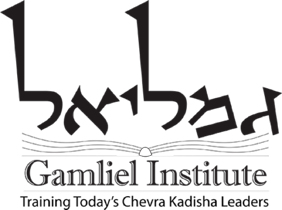Coronavirus (COVID-19) and Jewish Death Practices
This page provides a central forum for resources and news in relation to Jewish death-related practices and the ongoing pandemic of the COVID-19 virus. If you have new information or resources that you feel would be helpful to others, please share with us so we can help others (info@Jewish-Funerals.org).
Here’s a lovely poem about pandemics to help you keep perspective.
Returning to “Normal”
- NEW: March 2022 Updated Kavod v’Nichum Recommendations for returning to the in-person taharah room
- June 30, 2021 – Rabbinical Assembly teshuvah on “Are We There Yet? The Pandemic’s End, and What Happens Then“
Vaccination for Chevrah Kadisha Members
As the vaccination distribution for COVID-19 is slowed in many states, some are proposing that those who handle the bodies of deceased be among the first to get the vaccine. Here are some articles around this idea.
-
Can you still get infected, and infect others, if you get vaccinated?
Possibly. None of the vaccines tested so far have been 100 percent effective so some vaccinated people may still catch the coronavirus.
What’s more, neither the Pfizer nor the Moderna vaccine trials tested whether the vaccines prevent people from being infected with the virus. Those trials, instead, focused on whether people were shielded from developing disease symptoms. That means that it’s not clear whether vaccinated people could still develop asymptomatic infections — and thus still be able to spread the virus to others.
- Are we safe with vaccinations? Maybe not…
“I don’t believe we have the evidence on any of the vaccines to be confident that it’s going to prevent people from actually getting the infection and therefore being able to pass it on…”
… guidance issued by the Department of Homeland Security’s (DHS) Cybersecurity and Infrastructure Security Agency (CISA) named mortuary workers as “critical infrastructure workers.” Mortuary workers were included in the “Healthcare/Public Health” category along with doctors, nurses, people performing testing, and researchers
… National Academies of Science Engineering and Medicine (NASEM) released the “Framework for Equitable Allocation of COVID-19 Vaccine,” which included funeral directors in the highest priority phase for vaccine allocation.
A funeral or visitation service can be held for a person who has died of COVID-19. Funeral home workers should follow their routine infection prevention and control precautions when handling a decedent who died of COVID-19. [This article lists more details.]
If washing the body, shrouding, or other important religious or cultural practices are observed in a specific tribal community, families are encouraged to consider this guidance and work with their cultural and religious leaders and funeral home staff on how to reduce their exposure as much as possible.
If you participate in these activities, wear disposable gloves (nitrile, latex, or rubber). And you may need additional equipment (called personal protective equipment, or PPE). For example, you may need the following:
-
- Disposable, waterproof isolation gown
- Face shield or goggles
- Facemask
Following preparation of the body remove PPE and throw away. Immediately wash your hands with soap and water for at least 20 seconds. If soap and water are not available, use a hand sanitizer that contains at least 60% alcohol.
Shower after completing body preparation activities. If you did not wear any personal protective equipment while preparing the body, wash your clothes in the warmest setting possible and dry them completely.
For more information see CDC resources on Cleaning and Disinfecting Your Facility or Cleaning and Disinfecting Your Home.
Changing Practices as In-Person Taharah Resumes
- March 8, 2021 – The importance of ventilation in preventing spread of viruses
- August 30th, 2020 – The Boston chevrah has adopted a modified taharah procedure to allow in-person taharah while ensuring the safety of chevrah team members. This ritual employs the use of a mist spray instead of pouring taharah water, using this mister.
Recommendations for Taharah Room Safety – Also see Alternative Rituals Below
- Kavod v’Nichum Recommendations (updated March 18, 2022)
- Protective Equipment (PPE) Workshop video – more than just donning and doffing correctly (March 4, 2021)
- Kavod v’Nichum recommendations (updated March 24, 2020)
- The National Association of Chevros Kadisha recommendations (updated March 25, 2020)
- Recommended book: Health and Safety Precautions for Taharah – A Guide to Understanding Potential Risk and Injuries While Performing the Holy Work of the Chevrah Kadisha
Spiritual and Emotional Strength
There is an aspect of this new normal that we have not been addressing. Along with our physical safety needs of having social distancing, food in the house, transferring our work to be at home and online, etc, there are the emotional and spiritual aspects of this pandemic that are just beginning to be addressed.
-
- Laments and Kavannot for the Journey – a booklet by Rabbi Me’irah Iliinsky
- Time to Stop Avoiding Death – the Article quoted by Nicky Silver during her talk on Monday April 13th.
- Read Nicky Silver’s powerful talk on this, presented Monday April 6th.
- Here is another article about this issue of nechamah during a pandemic.
Articles on Infection Control in the Taharah Room
Click here to see over 20 articles spanning some 30+ years detailing the thinking about infection control and taharah practices.
Kaddish without a Minyan
- Isaac Pollack – Kaddish without a Minyan
- Rabbi Richard Hirsh – Kaddish L’Yahid – Variations on Kaddish Without a Minyan collected by Perry Dane
- Gail Tosto has created a Virtual Shmirah Box – a list of specific readings to use during shmirah online.
Chevrah Kadisha Policies and Articles that Deal with Pandemic Response
We are collecting local policy ideas and practices that have been put in place to deal with our changing and challenging times. The list below might be of assistance to those attempting to establish new policies in this regard. If you have a policy in place, please share it (info@Jewish-Funerals.org).
Articles from 2020
- June 27th – San Francisco questions/answers about testing
- June 12th – Jews have been fighting pandemics for centuries
- May 27th – How pandemics disrupt mourning practices
- May 27th – Jewish responses to pandemics throughout the ages
- May 1st – All the Things We Have to Mourn Now – six experts explain how to recognize the many new faces of grief during a pandemic.
- May 1st – Philadelphia Board of Rabbis Updated Guidelines for Funerals
- April 24th – Jewish Telegraphic Agency article: Cremation During the Pandemic is Not the Answer
- April 23rd – Zoom shiva tips
- April 8th – Overloaded morgues, mass graves and infectious remains: How forensic pathologists handle the coronavirus dead
- April 7th – NASCK Cemetery and Burial Safety Recommendations
- April 6th – New York Board of Rabbis for Stringency at Cemeteries
- April 3rd – Sinai Memorial Chapel Chevrah Kadisha new policy message
- April 1st – Jewish Funeral Practices Committee of Greater Washington policies announcement
- March 30th – Triage in the Time of Pandemic – Rabbi Elliot Dorff from the Conservative Movement
- March 25th – COVID-19 and Advance Care Planning
- March 23rd – Green Burial Council guidelines for burial during COVID-19
- March 23rd – Funeral Director shares policies
- March 23rd – Taharah in Israel – Revised Policies
- March 20th – Taharah guidance from Chevrah Kadisha of Greater Washington
- March 20th – Philadelphia Board of Rabbis policy recommendations
- March 20th – Israeli Health Ministry procedures as of 3/20/2020
- March 19th – Portland chevrah’s letter to funeral homes: stopping taharah for now
- March 19th – Latest policies of the Progressive Chevra Kadisha in Chicago
- March 19th – Lessons from history in responding to pandemics
- March 18th – Ohr Kodesh Chevra Kaddisha policies on Coronavirus
- March 18th – Israel reverses is policy on taharah for Coronavirus victims
Alternative Taharah Ritual Ideas – Keeping teams safe while still honoring the dead
- Rick Light has revised his well-respected Taharah manual, To Midwife a Soul, to now include new liturgies in addition to the established liturgy based on Ma’avar Yabbok. These include new liturgy for Taharah Ruchanit – when we must honor the dead but do not have or cannot be close to their body, and non-binary liturgy to support all gender identities.
- When no taharah can be performed, this new ritual created by Rabbi Lynn Greenhough, provides “completion” by offering a taharah-like ritual at the grave site, perhaps long after burial, when it is safe for teams to gather. She suggests that chevrot could perhaps perform this ritual between Rosh Hashanah and Yom Kippur. You have permission to download this to use in your community.
- Community Hevra Kadisha of Greater Boston has created a Taharah Seder during COVID that includes modifications for a 1-person taharah.
-
The New Community Chevra Kadisha of Greater Pittsburgh has adapted their manual to create a new liturgy for the pandemic age. Here is the women’s version. You have permission to download this to use for holy work in your community.
- The Chevra Kavod haMet of Portland, OR, has modified their existing taharah manual to create a new ritual called Tahara l’Nefesh, allowing taharah to be performed without the presence of the decedent’s body. See the men’s version here, the women’s version here. You have permission to download these to use them for holy work in your community.
- The Chevrah Kadisha of Kehilla Community Synagogue, Piedmont, CA, shares their new alternative taharah ritual, as a work in progress. You have permission to download and use this, with the understanding that it is still being refined, improved, and completed.
General Pandemic Articles of Jewish Interest
Articles from 2020
- Feb 2021 – From Cholera to Coronavirus: Recurring Pandemics, Recurring Rabbinic Responses
- April 18th – Planning a virtual memorial event
- April 1st – Video: Rabbi Lord Jonathan Sacks speaks about this pandemic and Pesach
- March 31st – Western Wall notes removed as wall sanitized
- March 30th – Bucharest Jews can bury on Shabbat to avoid cremation
- March 23rd – Emotional and spiritual preparation for what’s coming
- March 23rd – British government protects Jewish and Muslim burial
- March 19th – Face touching, NY Times article
- March 19th – Jewish death practices adapt to Coronavirus
- March 18th – Funeral guidelines for Los Angeles rabbis (updated March 20th)
- March 17th – Virus precautions have forced alternatives to saying Kaddish and attending shiva
- March 16th – Is the pandemic hurting Jewish community or making us stronger?
Scientific Articles and Research Related the Coronavirus
Relevant articles and papers from the scientific community in 2020:
- June 29th – The coronavirus is mutating – Washington Post
- March 28th – WHO considers evidence of airborne transmission
- March 27th – WHO details modes of transmission and recommendations
- March 22nd – Study Calculates Just How Much Age, Medical Conditions Raise Odds Of Severe COVID-19
- March 20th – Misguided drug advice for COVID-19
- March 20th – Study reveals how long coronavirus remains infectious
- March 19th – Dr who defeated Smallpox explains coronavirus
- March 19th – New blood tests for antibodies shows pandemic scale
- March 18th – How long does the virus last on surfaces, how to clean surfaces
- March 18th – Five charts explaining the coronavirus
- March 18th – Severe Outcomes Chart of Patients with Coronavirus
- March 17th – COVID-19 coronavirus epidemic has a natural origin
- Global research on coronavirus disease (COVID-19) – WHO database of research articles
National and Worldwide Pandemic Information
- World Health Organization: https://www.who.int/
- Centers for Disease Control and Prevention: http://www.cdc.gov/coronavirus
- The NY Times map of Coronavirus infections in US, with link to world-wide map

